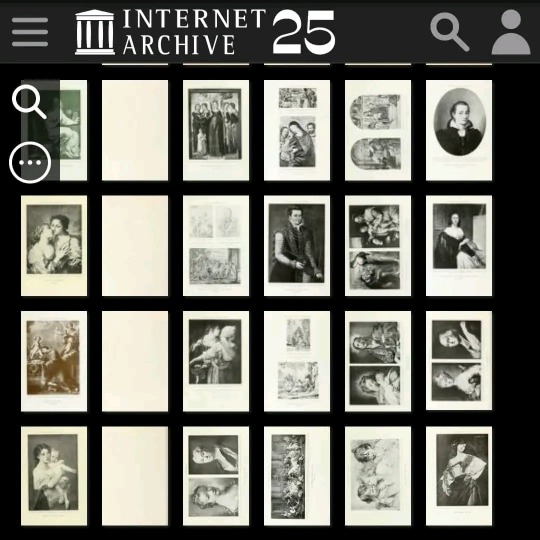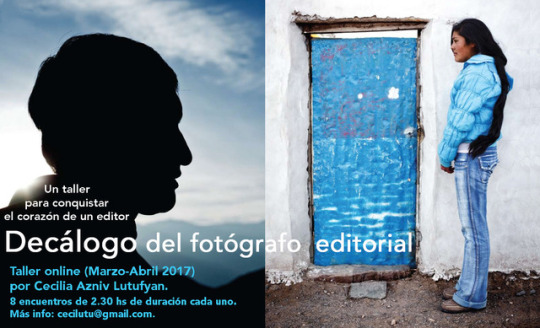#Cecilia Claudi
Explore tagged Tumblr posts
Text
RECENSIONE: La fine (Le streghe di BlackHollow, vol.3) di Cecilia Claudi
Cari Sognatori, Maia ha letto per noi l’epilogo della trilogia paranormal fantasy di Cecilia Claudi!! SERIE Le streghe di BlackHollow, vol.3 GENERE paranormal fantasy DATA DI USCITA 18 settembre 2020 Link d’acquisto Ebook / Cartaceo TRAMA Vedere lo scuolabus bruciare fa capire a Evie che ormai le cose stanno sfuggendo dal suo controllo in modo disastroso. Per quanto provi a sistemarle, ormai…

View On WordPress
#Cecilia Claudi#l&039;iniziazione#la fine#la scoperta#le streghe di BlackHollow#libri#paranormal fantasy#proposta#recensione#serie#trilogia
0 notes
Text

• Jirai themed NPT ' s! ❤︎
Names : Mara Diedre Líadan Cecilia Lilith Casimir Mallory Lucinda Acaste Cara Noemie Liz Claude, Claudie Liddy Salem Sabrina Lacey, Lacie Ribbon Loelia Cassia Morax Lorne Cecil Lulu Deire Laise Mauve
Prns : Che cher cherish Shy hyr Lae lace Rib ribbon He heart Love loves Lace laces Mo moral Ego egos Land mines Creep creepy Cue cute He heart Kie keir Bow bows Mi miu Fri frill He hate Mei mental Psy psyche Sh♥︎ H♥︎r
Titles : The landmine Her hatred The girl in frills Her teetering stability The unstable girl Her mangled self The shut-in Her lies The creepy - cute girl The two - faced The love - lacking Her disdain
Not requested, for a headmate! We'd prefer that "fashion jirai's" not interact with us, but anyone can use!

#݁ • npt 💝#themed npt#npt set#npt blog#npt pack#npt ideas#npt list#npt suggestions#npt help#npt request#name request#name suggestions#name ideas#pronoun suggestions#pronouns#neopronouns#neoprns#title ideas#title suggestions
23 notes
·
View notes
Text

What a treasure! - with a special dedication to @dinahvaginaart
Women Painters of the World, from the time of Caterina Vigri, 1413–1463, to Rosa Bonheur and the present day, assembled and edited by #WalterShawSparrow, lists an overview of prominent #womenpainters up to 1905, the year of publication.
How is this NOT ?! a compulsory book at the each and every #artcourse?! #artherstory
Here's the list of the painters (this will keep me busy for some time :)
Louise Abbéma
Madame Abran (Marthe Abran, 1866-1908)
Georges Achille-Fould
Helen Allingham
Anna Alma-Tadema
Laura Theresa Alma-Tadema
Sophie Gengembre Anderson
Helen Cordelia Angell
Sofonisba Anguissola
Christine Angus
Berthe Art
Gerardina Jacoba van de Sande Bakhuyzen
Antonia de Bañuelos
Rose Maynard Barton
Marie Bashkirtseff
Jeanna Bauck
Amalie Bauerlë
Mary Beale
Lady Diana Beauclerk
Cecilia Beaux
Ana Bešlić
Marie-Guillemine Benoist
Marie Bilders-van Bosse
Lily Blatherwick
Tina Blau
Nelly Bodenheim
Kossa Bokchan
Rosa Bonheur
Mlle. Bouillier
Madame Bovi[2]
Olga Boznanska
Louise Breslau
Elena Brockmann
Jennie Augusta Brownscombe
Anne Frances Byrne
Katharine Cameron
Margaret Cameron (Mary Margaret Cameron)
Marie Gabrielle Capet
Margaret Sarah Carpenter
Madeleine Carpentier
Rosalba Carriera
Mary Cassatt
Marie Cazin
Francine Charderon
Marian Emma Chase
Zoé-Laure de Chatillon
Jeanne-Elisabeth Chaudet
Lilian Cheviot
Mlle. Claudie
Christabel Cockerell
Marie Amélie Cogniet
Uranie Alphonsine Colin-Libour
Jacqueline Comerre-Paton
Cornelia Conant
Delphine Arnould de Cool-Fortin
Diana Coomans
Maria Cosway
Amelia Curran
Louise Danse
Héléna Arsène Darmesteter
Maria Davids
Césarine Davin-Mirvault
Evelyn De Morgan
Jane Mary Dealy
Virginie Demont-Breton
Marie Destrée-Danse
Margaret Isabel Dicksee
Agnese Dolci
Angèle Dubos
Victoria Dubourg
Clémentine-Hélène Dufau
Mary Elizabeth Duffield-Rosenberg
Maud Earl
Marie Ellenrieder
Alix-Louise Enault
Alice Maud Fanner
Catherine Maria Fanshawe
Jeanne Fichel
Author
Walter Shaw Sparrow
Country
United Kingdom
Language
English language
Genre
Art history
Publisher
Hodder & Stoughton, Frederick A. Stokes
Publication date
1905
Pages
331
The purpose of the book was to prove wrong the statement that "the achievements of women painters have been second-rate."[1] The book includes well over 300 images of paintings by over 200 painters, most of whom were born in the 19th century and won medals at various international exhibitions. The book is a useful reference work for anyone studying women's art of the late 19th century
Louise Abbéma
Madame Abran (Marthe Abran, 1866-1908)
Georges Achille-Fould
Helen Allingham
Anna Alma-Tadema
Laura Theresa Alma-Tadema
Sophie Gengembre Anderson
Helen Cordelia Angell
Sofonisba Anguissola
Christine Angus
Berthe Art
Gerardina Jacoba van de Sande Bakhuyzen
Antonia de Bañuelos
Rose Maynard Barton
Marie Bashkirtseff
Jeanna Bauck
Amalie Bauerlë
Mary Beale
Lady Diana Beauclerk
Cecilia Beaux
Ana Bešlić
Marie-Guillemine Benoist
Marie Bilders-van Bosse
Lily Blatherwick
Tina Blau
Nelly Bodenheim
Kossa Bokchan
Rosa Bonheur
Mlle. Bouillier
Madame Bovi[2]
Olga Boznanska
Louise Breslau
Elena Brockmann
Jennie Augusta Brownscombe
Anne Frances Byrne
Katharine Cameron
Margaret Cameron (Mary Margaret Cameron)
Marie Gabrielle Capet
Margaret Sarah Carpenter
Madeleine Carpentier
Rosalba Carriera
Mary Cassatt
Marie Cazin
Francine Charderon
Marian Emma Chase
Zoé-Laure de Chatillon
Jeanne-Elisabeth Chaudet
Lilian Cheviot
Mlle. Claudie
Christabel Cockerell
Marie Amélie Cogniet
Uranie Alphonsine Colin-Libour
Jacqueline Comerre-Paton
Cornelia Conant
Delphine Arnould de Cool-Fortin
Diana Coomans
Maria Cosway
Amelia Curran
Louise Danse
Héléna Arsène Darmesteter
Maria Davids
Césarine Davin-Mirvault
Evelyn De Morgan
Jane Mary Dealy
Virginie Demont-Breton
Marie Destrée-Danse
Margaret Isabel Dicksee
Agnese Dolci
Angèle Dubos
Victoria Dubourg
Clémentine-Hélène Dufau
Mary Elizabeth Duffield-Rosenberg
Maud Earl
Marie Ellenrieder
Alix-Louise Enault
Alice Maud Fanner
Catherine Maria Fanshawe
Jeanne Fichel
Rosalie Filleul
Fanny Fleury
Julia Bracewell Folkard
Lavinia Fontana
Elizabeth Adela Forbes
Eleanor Fortescue-Brickdale
Consuélo Fould
Empress Frederick of Germany
Elizabeth Jane Gardner
Artemisia Gentileschi[3]
Diana Ghisi
Ketty Gilsoul-Hoppe
Marie-Éléonore Godefroid
Eva Gonzalès
Maude Goodman
Mary L. Gow
Kate Greenaway
Rosina Mantovani Gutti
Gertrude Demain Hammond
Emily Hart
Hortense Haudebourt-Lescot
Alice Havers
Ivy Heitland
Catharina van Hemessen
Matilda Heming
Mrs. John Herford
Emma Herland
E. Baily Hilda
Dora Hitz
A. M. Hobson
Adrienne van Hogendorp-s' Jacob
Lady Holroyd
Amelia Hotham
M. J. A. Houdon
Joséphine Houssaye
Barbara Elisabeth van Houten
Sina Mesdag van Houten
Julia Beatrice How
Mary Young Hunter
Helen Hyde
Katarina Ivanović
Infanta María de la Paz of Spain
Olga Jančić
Blanche Jenkins
Marie Jensen
Olga Jevrić
Louisa Jopling
Ljubinka Jovanović
Mina Karadžić
Angelica Kauffman
Irena Kazazić
Lucy E. Kemp-Welch
Jessie M. King
Elisa Koch
Käthe Kollwitz
Adélaïde Labille-Guiard
Ethel Larcombe
Hermine Laucota
Madame Le Roy
Louise-Émilie Leleux-Giraud
Judith Leyster
Barbara Longhi
Princess Louise, Duchess of Argyll
Marie Seymour Lucas
Marie Lucas Robiquet
Vilma Lwoff-Parlaghy
Ann Macbeth
Biddie Macdonald
Jessie Macgregor
Violet Manners, Duchess of Rutland
E. Marcotte
Ana Marinković
Madeline Marrable
Edith Martineau
Caroline de Maupeou
Constance Mayer
Anne Mee
Margaret Meen
Maria S. Merian
Anna Lea Merritt
Georgette Meunier
Eulalie Morin
Berthe Morisot
Mary Moser
Marie Nicolas
Beatrice Offor
Adeline Oppenheim Guimard
Blanche Paymal-Amouroux
Marie Petiet
Nadežda Petrović
Zora Petrović
Constance Phillott
Maria Katharina Prestel
Henrietta Rae
Suor Barbara Ragnoni
Catharine Read
Marie Magdeleine Real del Sarte
Flora Macdonald Reid
Maria G. Silva Reis
Mrs. J. Robertson
Suze Robertson
Ottilie Roederstein
Juana Romani
Adèle Romany
Jeanne Rongier
Henriëtte Ronner-Knip
Baroness Lambert de Rothschild
Sophie Rude
Rachel Ruysch
Eugénie Salanson
Adelaïde Salles-Wagner
Amy Sawyer
Helene Schjerfbeck
Félicie Schneider
Anna Maria Schurman
Thérèse Schwartze
Doña Stuart Sindici
Elisabetta Sirani
Sienese Nun Sister A
Sienese Nun Sister B
Minnie Smythe
Élisabeth Sonrel
Lavinia, Countess Spencer
M. E. Edwards Staples
Louisa Starr
Marianne Stokes
Elizabeth Strong
Mary Ann Rankin (Mrs. J. M. Swan)
Annie Louise Swynnerton
E. De Tavernier
Elizabeth Upton, Baroness Templetown
Ellen Thesleff
Elizabeth Thompson
Maria Tibaldi m. Subleyras
Frédérique Vallet-Bisson
Caroline de Valory
Mlle. de Vanteuil[4]
Elisabeth Vigée-Lebrun
Caterina Vigri
Vukosava Velimirović
Ana Vidjen
Draginja Vlasic
Beta Vukanović
Louisa Lady Waterford
Hermine Waternau
Caroline Watson
Cecilia Wentworth
E. Wesmael
Florence White
Maria Wiik
Julie Wolfthorn
Juliette Wytsman
Annie Marie Youngman
Jenny Zillhardt.
#womensart #artbywomen #palianshow #womeninarts #greatfemaleartist
#greatfemalepainters #herstory #forgottenartists #mustread
6 notes
·
View notes
Text
"Attraverso le fessure: Vol.1" di Cecilia Claudi
"Ci sono giorni in cui sono in grado di prendere decisioni drastiche e giorni in cui non sono proprio capace di affrontarle."
0 notes
Photo

Marià Fortuny - Self portrait - 1863-73
Marià Fortuny i Marsal (complete name Marià Josep Maria Bernat Fortuny i Marsal, in Spanish: Mariano José María Bernardo Fortuny y Marsal; June 11, 1838 – November 21, 1874), known more simply as Marià Fortuny or Mariano Fortuny, was the leading Catalan painter of his day, with an international reputation. His brief career encompassed works on a variety of subjects common in the art of the period, including the Romantic fascination with Orientalist themes, historicist genre painting, military painting of Spanish colonial expansion, as well as a prescient loosening of brush-stroke and color.
He was born in Reus, a town near Tarragona, in Catalonia, Spain. His father died when Marià was an infant, and his mother by the time he was 12. Thus, Marià was raised by his grandfather, a cabinet-maker who taught him to make wax figurines. At the age of 9, at a public competition in his town, a local painter, teacher and patron, Domènec Soberano i Mestres, encouraged further study. At the age of 14 he moved to Barcelona with his grandfather. The sculptor Domènec Talarn secured him a pension allowing him to attend the Academy of Barcelona (La Llotja school of art). There he studied for four years under Claudi Lorenzale and Pau Milà i Fontanals (es), and in March 1857 he gained a scholarship that entitled him to two years of studies in Rome starting in 1858. There he studied drawing and grand manner styles, together with Josep Armet i Portanell, at the Academia Giggi.
In 1859, he was called by the Government of the Province of Barcelona (Diputació de Barcelona) to depict the campaigns of the Spanish-Moroccan War. He went to Morocco from February to April of that year, making sketches of landscapes and battles, which he showed in Madrid and Barcelona when he returned. These would later serve him as preliminary sketches for his monumental piece, The Battle of Tetuan (La batalla de Tetuan, 1862–64, Museu Nacional d'Art de Catalunya). Since the days of Velázquez, there had been a tradition in Spain (and throughout Europe) of memorializing battles and victories in paint. On the basis of his experiences, Fortuny was commissioned by the Council of the Province of Barcelona (Diputació de Barcelona) to paint a large canvas diorama of the capture of the camps of Muley-el-Abbas and Muley-el-Hamed by the Spanish army. He began his composition of The battle of Tetuan on a canvas 15 metres long; but, though he worked on it off and on during the next decade, it was never finished.
The greater influence of this travel on Fortuny was his subsequent fascination with the exotic themes of the world of Morocco, painting both individuals and imagined court scenes. He visited Paris in 1868 and shortly afterwards married Cecilia de Madrazo, the daughter of Federico de Madrazo, who would become curator of the Prado Museum in Madrid. Together, they had a son, Mariano Fortuny y Madrazo, who became a well-known fashion and tapestry designer. Another visit to Paris in 1870 was followed by a two years' stay at Granada, but then he returned to Rome, where he died somewhat suddenly on November 21, 1874 from an attack of tertian ague, or malaria, contracted while painting in the open air at Naples and Portici in the summer of 1874. One of his pupils was Attilio Simonetti.
69 notes
·
View notes
Photo

Decálogo del fotógrafo editorial
Un taller para conquistar el corazón de un editor
por Cecilia Azniv Lutufyan
El taller se propone introducir al fotógrafo en el lenguaje específico de los medios gráficos y brindarle las herramientas necesarias para desarrollar una mirada personal dentro de ese contexto.
Modalidad: 8 encuentros de 2.30 horas de duración cada uno. Dónde: taller a distancia (docente con sede en Madrid). Días y horarios: sábados 10 am. Comienza: 4 de marzo. Destinatarios: dirigido a fotógrafos que buscan insertarse en el universo editorial y mejorar su desempeño profesional en un medio gráfico; personas interesadas en aprender cómo abordar visualmente una historia, un lugar o un personaje; cómo entrenar la mirada y cómo editar y construir sentido a partir de las imágenes. Costo total del taller: $ 3000 (dos pagos de $1500). Requisitos: conocimientos básicos de fotografía y equipo básico para realizar ejercicios. Más información: [email protected]
Docente: Cecilia Azniv Lutufyan
Estudió Ciencias de la Comunicación en la Universidad de Buenos Aires y fotoperiodismo en TEA (Taller Escuela Agencia).
Se formó en los talleres y clínicas de Juan Travnik, Adriana Lestido, Julieta Escardó y Tulio de Sagastizábal y realizó workshops con Anders Petersen, Luis González Palma, Iata Cannabrava y Claudi Carreras, entre otros. Fue premiada entre los participantes del visionado de portfolios DESCUBRIMIENTOS con la beca del Master PhotoEspaña en PICA, Madrid (2015-2016).
Trabaja en medios gráficos desde hace 20 años. Fue editora de fotografía y fotógrafa de la revista Lugares (principal revista de viajes de la Argentina) desde 2006 hasta 2014. Publicó sus trabajos como fotógrafa y cronista en las revistas Travel&Leisure, MasterMagazine, Argentina Traveler, Corporate, Sojourn, Austral y Aerolíneas, Expressions, El Gourmet, Rolling Stone y Brando. Fue editora, fotógrafa y redactora de las revistas Winds, Contraseñas, El Patio y H&G.
En 2016 y 2014 quedó seleccionada en el 5to y 4to PREMIO AAMEC de Fotografía Contemporánea. En 2014 fue convocada como jurado para el premio publicación de la colección Pequeño Formato de ARGRA editora (Asociación de Reporteros Gráficos de Argentina). En el 2011, su fotolibro Criaturas fue premiado en el marco de la Bienal de Fotografía de Lima.
www.cecilialutufyan.com.ar
0 notes
Text
RECENSIONE: L'iniziazione (Le streghe di BlackHollow, vol.2) di Cecilia Claudi
Cari Sognatori, Maia ha letto per noi il secondo volume della trilogia paranormal fantasy di Cecilia Claudi!! SERIE Le streghe di BlackHollow, vol.2 GENERE paranormal fantasy DATA DI USCITA 31 gennaio 2020 Link d’acquisto Ebook / Cartaceo TRAMA Evie sta cercando di destreggiarsi nelle nuove dinamiche della sua vita. Ha di nuovo libero accesso ai suoi poteri, ma questa sembra essere l’unica nota…

View On WordPress
#BOOK BLOGER#BOOK BLOGGER#BOOK BLOGGING#BOOK CLUB#BOOK REVIEWS#BOOK TUMBLR#BOOKBLOG#BOOKBLOGGER#BOOKBLR#BOOKISH#BOOKREADS#BOOKS AND READING#BOOKSTAGRAM#BOOKWORM#Cecilia Claudi#FANTASY BOOK#fANTASY BOOKS SERIES#l&039;iniziazione#la scoperta#le streghe di BlackHollow#libri#paranormal fantasy#proposta#recensione#serie#SERIE BOOK FANTASY#trilogia
0 notes
Text
RECENSIONE: La scoperta: le streghe di BlackHollow di Cecilia Claudi
Cari Sognatori, Maya ha letto il primo volume della serie Le streghe di BlackHollow di Cecilia Claudi!!! SERIE: Le streghe di BlackHollow vol1 GENERE: Fantasy romance DATA DI USCITA: 16 novembre 2019 Link d’acquisto Ebook / Cartaceo TRAMA Evie ha sedici anni, è apparentemente cinica e dura. Ma questo non serve quando nella sua vita irrompe Megan, una cugina di cui non sapeva neanche l’esistenza…

View On WordPress
#Cecilia Claudi#consigliato#contemporary romance#FANTASY#la scoperta#Le streghe di BlackHollow vol1#libri#proposta#recensione#serie
0 notes